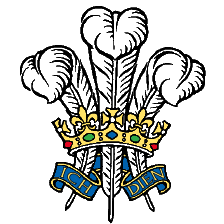It is widely recognised that planting trees too deep is a major cause for premature decline.
Tree roots need both oxygen and water so inevitably they grow within the top metre of the soil. We tell customers to plant our container trees an inch proud of the soil line to allow it to settle back into the freshly dug hole. Better to plant too proud than too deep.
Root balled trees are a real challenge. Cultivation and root balling in the field heave soil up the stem so that they sit several inches too deep to start with. Nurseries who containerise root balled trees pile compost on top of them and then landscapers use root anchors to stabilize them at planting. I reckon most root balled trees are planted at least 5 inches too deep and this is the major reason for failure further on down the line.
When we lift our trees from the field and containerise them, the top of the first root is no more than a centimetre under the compost level and for customers who specify, we then paint a line at the point the root flare leaves the compost. For the customer, if they can’t see this paint line after planting, they know it is planted too deep!
We call this ‘The Barcham Line’


Posted by Mike Glover
View all Barcham trees
Bulk discount when you buy any mix of 10 trees or more



 Pruning large and mature trees requires a lot of thought! A severe prune in winter will take off all the flower buds for the next spring which in turn dismisses all chance of enjoying the rewards of fruit in the autumn. It can also trigger a strong reaction of new season growth which then produces loads of flower and fruit two seasons down the line. The tree can then get in the swing of this cycle and develop a condition called biennial bearing, i.e. fruiting every other year.
Pruning large and mature trees requires a lot of thought! A severe prune in winter will take off all the flower buds for the next spring which in turn dismisses all chance of enjoying the rewards of fruit in the autumn. It can also trigger a strong reaction of new season growth which then produces loads of flower and fruit two seasons down the line. The tree can then get in the swing of this cycle and develop a condition called biennial bearing, i.e. fruiting every other year. sunlight in the canopy. A dense headed crowded crown will shade out fruit development so when pruning keep this in mind and let the light in through the middle.
sunlight in the canopy. A dense headed crowded crown will shade out fruit development so when pruning keep this in mind and let the light in through the middle. But this is not an exact science! An ill-timed spring frost can wipe out all best laid plans and wipe out fruiting potential for the year and force the tree into a biennial bearing cycle of nature’s doing! Also, on the odd occasion when nature allows you to do the perfect job, birds, insects and rodents can play their part to ruin your crop. In a garden environment where the tree is also grown for its ascetic beauty, pruning is a last resort when you are unhappy with shape or you have to tame a supersized tree that is growing beyond its space allowance. He firm rule is to prune deciduous trees when they are dormant and leafless in the winter and evergreen trees in March / April, just before they start to wake up for the spring.
But this is not an exact science! An ill-timed spring frost can wipe out all best laid plans and wipe out fruiting potential for the year and force the tree into a biennial bearing cycle of nature’s doing! Also, on the odd occasion when nature allows you to do the perfect job, birds, insects and rodents can play their part to ruin your crop. In a garden environment where the tree is also grown for its ascetic beauty, pruning is a last resort when you are unhappy with shape or you have to tame a supersized tree that is growing beyond its space allowance. He firm rule is to prune deciduous trees when they are dormant and leafless in the winter and evergreen trees in March / April, just before they start to wake up for the spring. This is why we containerise our trees! Broken root systems are repaired over the following growing season for us to deliver an unwounded product that is geared for rapid and sustained establishment from the off. What is more, this is the reason we can guarantee our trees for our customers, we supply trees with roots attached! Our patented Light Pots are renowned to provide you with a great root system and have revolutionized the way trees are supplied in the past 20 years.
This is why we containerise our trees! Broken root systems are repaired over the following growing season for us to deliver an unwounded product that is geared for rapid and sustained establishment from the off. What is more, this is the reason we can guarantee our trees for our customers, we supply trees with roots attached! Our patented Light Pots are renowned to provide you with a great root system and have revolutionized the way trees are supplied in the past 20 years. So going back to the original question, “Do smaller trees catch up larger trees if planted at the same time?” the answer is no, not if it’s a Barcham Tree! Our trees grow away at the same rate despite its starting size. When planning a garden it’s always nice to the initially mix sizes to give the landscape a random naturalness. When uniformity is required for avenue planting, trees ordered at one size will grow away at the same rate for a great long term effect.
So going back to the original question, “Do smaller trees catch up larger trees if planted at the same time?” the answer is no, not if it’s a Barcham Tree! Our trees grow away at the same rate despite its starting size. When planning a garden it’s always nice to the initially mix sizes to give the landscape a random naturalness. When uniformity is required for avenue planting, trees ordered at one size will grow away at the same rate for a great long term effect. But does it have to be that way? Mike Glover, managing director, explains how we collect seed from veteran trees across the UK each autumn:
But does it have to be that way? Mike Glover, managing director, explains how we collect seed from veteran trees across the UK each autumn: But trees are a long-term business and there is always demand for a greater diversity than our native range. Significantly, the topic of tree importation and the protection of woodland became a topic of discussion in the House of Lords earlier this year. Barcham Trees was singled out for trying to tackle these problems by introducing its own quarantine system for all imported trees. ‘We don’t import trees and sell to customers for immediate planting—instead, we hold all imported trees on the nursery for at least one full growing season. During this time, they are monitored by professionals and outside agencies such as Defra,’ Mike elaborates. It may not always be practical to look at the parent, but knowing where our trees have come from means we can enjoy a full range of beautiful specimens without unintended and potentially disastrous consequences.
But trees are a long-term business and there is always demand for a greater diversity than our native range. Significantly, the topic of tree importation and the protection of woodland became a topic of discussion in the House of Lords earlier this year. Barcham Trees was singled out for trying to tackle these problems by introducing its own quarantine system for all imported trees. ‘We don’t import trees and sell to customers for immediate planting—instead, we hold all imported trees on the nursery for at least one full growing season. During this time, they are monitored by professionals and outside agencies such as Defra,’ Mike elaborates. It may not always be practical to look at the parent, but knowing where our trees have come from means we can enjoy a full range of beautiful specimens without unintended and potentially disastrous consequences. Welcome to the first, I hope, of many production blogs. My name is Warren Holmes-Chatfield and I am the Operations Director at Barcham Trees. In production it is our job to do the growing and maintaining of our trees in our distinctive white bags.
Welcome to the first, I hope, of many production blogs. My name is Warren Holmes-Chatfield and I am the Operations Director at Barcham Trees. In production it is our job to do the growing and maintaining of our trees in our distinctive white bags. of oaks, moving onto cherries at the start of spring and on it goes through the hundreds of varieties that Barcham Trees grows.
of oaks, moving onto cherries at the start of spring and on it goes through the hundreds of varieties that Barcham Trees grows. our nursery and the growing season truly begins.
our nursery and the growing season truly begins.




 Following on from a House of Lords debate in January bemoaning the introduction of new pest and diseases coming into the UK from companies importing trees from abroad, we are saying that it doesn’t have to be this way! Every October I collect seeds from veteran UK trees that have a proven history and providence. The acorns I collect are from specimen trees over 300 years old and they are planted in seedbeds the day after I harvest them for best germination results.
Following on from a House of Lords debate in January bemoaning the introduction of new pest and diseases coming into the UK from companies importing trees from abroad, we are saying that it doesn’t have to be this way! Every October I collect seeds from veteran UK trees that have a proven history and providence. The acorns I collect are from specimen trees over 300 years old and they are planted in seedbeds the day after I harvest them for best germination results. Always ask where your trees are coming from! 9 times out of 10 they will be imported, sometimes with nasty ramifications. Oak Processionary Moth, which can hospitalize people if they inhale their projectile hairs, was brought into the UK by importing nurseries. This pest will cost London over a six figure sum to combat next summer, all because of lax biosecurity. It is possible to reverse this trend by buying from British growers who don’t factor in trees from abroad for immediate resale and who would rather put the time in to do the job properly!
Always ask where your trees are coming from! 9 times out of 10 they will be imported, sometimes with nasty ramifications. Oak Processionary Moth, which can hospitalize people if they inhale their projectile hairs, was brought into the UK by importing nurseries. This pest will cost London over a six figure sum to combat next summer, all because of lax biosecurity. It is possible to reverse this trend by buying from British growers who don’t factor in trees from abroad for immediate resale and who would rather put the time in to do the job properly!